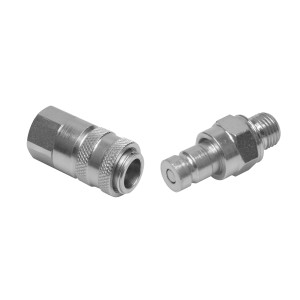Diagnostic coupling
The importance of diagnostic couplings in hydraulic systems
Diagnosis couplings are an indispensable component in the world of hydraulic technology. These special connectors facilitate smooth connection of pressure gauges or manometers to accurately monitor the current pressure in the hydraulic system.
Diagnosis couplings are designed to enable quick and secure connection and disconnection of pressure gauges without the need to drain the entire hydraulic system. This flexibility is crucial for efficient maintenance and fault diagnosis without disrupting the continuous operation of the system.
The outstanding advantage of diagnosis couplings lies in their ability to provide technicians with direct access to the pressure in the system. By precisely measuring the pressure, potential issues such as leaks, blockages, or unusual pressure fluctuations can be detected early. This allows for proactive measures to prevent major damage and ensure the reliability of the hydraulic system.
Diagnosis couplings are available in various designs to meet the specific requirements of different hydraulic systems. Equipped with threaded connections, they allow for easy connection to pressure gauges. Some models also offer safety mechanisms to prevent accidental disconnection and minimize the risk of leaks.
Overall, diagnosis couplings significantly contribute to ensuring the performance, safety, and longevity of hydraulic systems. By precisely monitoring and diagnosing pressure conditions, they are an indispensable tool for the maintenance and optimization of stationary and mobile hydraulic systems.



